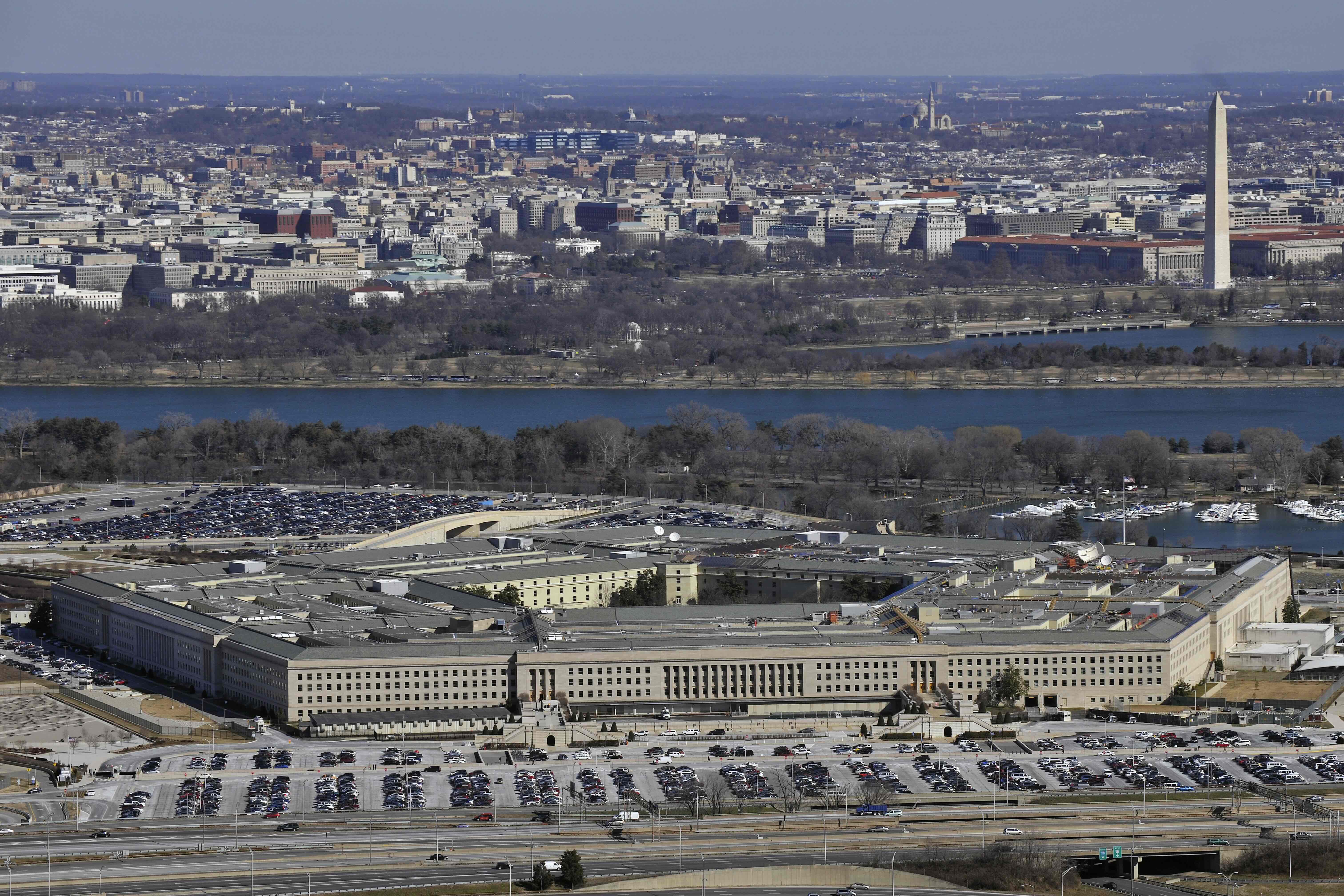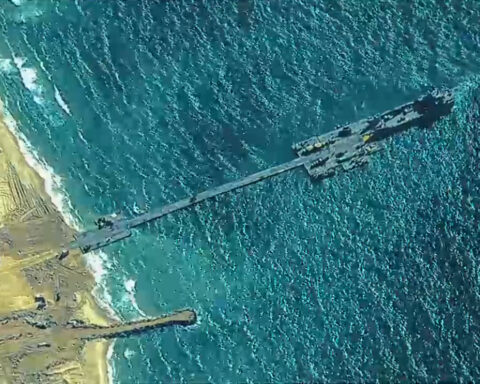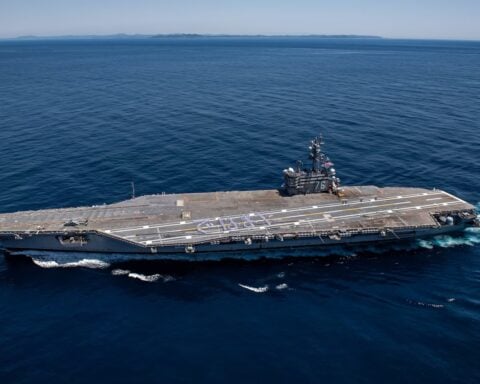
More than a year after promising more information on Chinese aircraft intercepts over the Western Pacific, the Pentagon provided a limited summary of unsafe encounters over the last two years.
Previewing the annual China Military Power Report, assistant secretary of defense for Indo-Pacific security affairs Ely Ratner described a “sharp increase in coercive and risky operational behavior in the East and South China seas,” referring to air-to-air interactions between the U.S. military and the People’s Liberation Army.
“Since the Fall of 2021, we have seen more than 180 such incidents – more in the past two years than in the decade before that. That’s nearly 200 cases where PLA operators have performed reckless maneuvers or discharged chaff, or shot off flares, or approached too rapidly or too close to U.S. aircraft – all as part of trying to interfere with the ability of U.S. forces to operate safely in places where we and every country in the world have every right to be under international law,” Ratner told reporters.“And when you take into account cases of coercive and risky PLA intercepts against other states, the number increases to nearly 300 cases against U.S., ally and partner aircraft over the last two years.”
The Defense Department published accounts, including photos and video, of 15 separate incidents in the air between January 2022 and September 2023.
Ratner described China’s uptick in aggressive behavior as a deliberate strategy by the People’s Republic of China. The Pentagon’s top official for the Indo-Pacific pointed to a January 2023 incident in which a Chinese fighter flew “hundreds of miles per hour” toward a U.S. aircraft flying in international airspace over the South China Sea. The Chinese jet flew 30 feet away from the U.S. plane for more than 15 minutes, according to Ratner. That incident took place shortly after U.S. Indo-Pacific Command released footage of a similar intercept.
“For the PLA to engage in this coercive and risky behavior so soon after that incident – indeed for PLA operators to continue this behavior at all – points to what this year’s CMPR will described as … ‘a centralized and concerted campaign to perform these risky behaviors in order to coerce a change in lawful U.S. operational activity and that of U.S. allies and partners,’” Ratner said.
U.S. officials have repeatedly said that interactions with China in the air have become more aggressive and unsafe, but this is the first set of data the Pentagon has released to support those assertions. While this declassified data set is the most detailed information the U.S. has revealed about unsafe intercepts over the East and South China seas, Ratner did not provide additional data to put the intercepts in context.
In August, USNI News flew aboard a P–8A Poseidon aircraft over the South China Sea, where a Chinese Su-35 fighter intercepted the U.S. plane. The interaction was safe and professional, according to the crew, and the Chinese pilot flew off the P-8’s portside for about an hour before peeling off.
Speaking to reporters at the Pentagon Tuesday, U.S. Indo-Pacific Command chief Adm. John Aquilino said U.S. and Chinese planes have been flying much closer together since a 2001 incident when a U.S. Navy EP-3E Aries II aircraft collided midair with a Chinese fighter during an intercept over the South China Sea.
“When you get to unsafe and unprofessional, that’s really concerning behavior. People’s lives are at risk. What we’ve seen since 2001 is a set of actions that have brought airplanes much closer together than are comfortable for those in the cockpit,” Aquilino said. “In other words, flying off my wing at 15 feet for 45 minutes has too much of a chance to lead to an accident. We’ve seen an increase in those close intercepts and activities in very close proximity to our airplanes since the fall of [2021]. A subset of those 180 have been unsafe, unprofessional.”
While this is the first time the Pentagon has released significant details about Chinese intercepts, Japan has historically been transparent about its interactions with China in the East China Sea. According to data released last week, the Japan Air Self-Defense Force performed 304 scrambles against Chinese aircraft in the first half of Japan’s Fiscal Year 2023. Scrambles against Chinese aircraft accounted for 72 percent of the 424 total scrambles for the first half of the fiscal year, USNI News previously reported. That was a slight decrease from the number of scrambles in the first half of FY 2022.
Asked if the Defense Department is seeing similar behavior from China at sea, Ratner said: “Absolutely yes.”
“This is part of a broader pattern of PLA behavior throughout the region, throughout domains and throughout geographies,” he said. “We’re seeing this behavior on the water, in the East China Sea and the South China Sea. We’re seeing it against allies and partners – not just the United States – we’re seeing it on land against our Indian partners. So this is part of a much broader picture.”





